top of page
FIAT 1180 - 1880
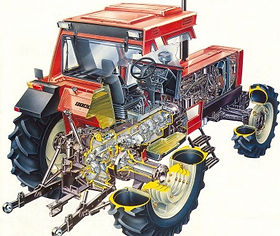.jpg)


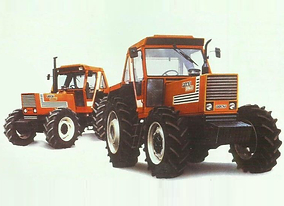
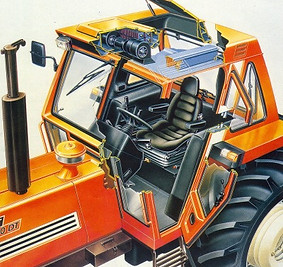
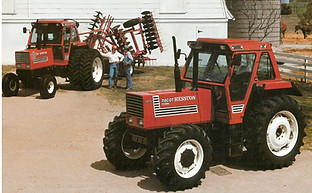
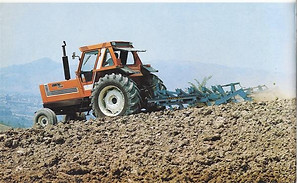
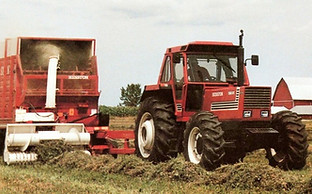
The mid-to-late 70's were a busy and exciting time for the Italian company.
Fiat Trattori S.P.A had just been formed in 1974, counting four factories domestically, including the SPA factory in Turin, and the OM factory in Brescia, not forgetting four factories abroad, and six construction and assembly licenses. All having to be organized under the new company structure.
The millionth Fiat tractor rolled of the line in 1974 as well.
In 1975, Fiat went on a buying spree, acquiring a 20% holding in Laverda, and buying four factories from other Italian manufacturers, including the Lamborghini Trattori factory of Cento, and the Agrifull-Toselli company of Ferrara. And again in 1977, buying the Spanish tractor constructor Motransa, and Fiat's first holding in Hesston. All while developing and introducing a full line of new 80-series tractors.
In 1977, one out of ten tractor sold around the world was a Fiat tractor.
What set the 80-series apart from its competitors when first seen in 1975, was the new and luxuries
heated and airconditioned, rubber suspended, monocoque, "Supercomfort" cabin.
Fiat had spent much time, and invested considerably in researching the optimal driver ergonomics, and developing a strong and silent cabin together with Pinninfarina, when most of its European competitors where still offering operator cabins as an afterthought.
Other technical innovations such as fully synchronized gearboxes, wet disc brakes and power-steering
on all models, flexion bar draft control, a new four wheel drive system with epicycloid reduction gears, and a coaxial driveshaft extension without cardan joints, combined with competitive pricing, made the 80-series a roaring succes for Fiat Trattori.
The full 80-series would slowly be revealed to the public. First with the introduction of the 780 and 880 in 1975. Followed up by the 580, 680 and 980 in 1978. And finally the "Grandi" tractors in 1979.
When the medium-large to large "Grandi" tractors finally joined the 80-series lineup after five years of testing and development, Fiat became a full-range tractor manufacturer, with tractors ranging from 21 to 350 hp, including the Agrifull and Versatile based tractors.
The "Grandi" 80's were sold internationally and domestically as Fiat. Apart from France and North America, where they were sold under the Someca and Hesston brand respectively.
The tractor initially carried the orange bodycolor that Fiat Trattori were known for, but the series would from 1981 change to the redish-brown "Terracotta" bodycolor, which had already been used on Hesston branded Fiat tractors, and would become synonymous with the "Fiatagri" brand.
The changes in 1981 also included a re-design of the Supercomfort cabins C-pillar, making it slimer, in respons to first owners complaints about the lack of visibility out the triangular side windows.
The 80-series carried over the strong and proven stressed chassis design from the Gold Ribbon series, with the engines cast-iron crankcase being part of the tractors backbone.
And for the first time in Fiats history, the engines in the 1380, 1580 and 1880 would be fitted with a turbocharger.
All the "Grandi" 80's were available with two newly developed and fully synchronized gearboxes.
Standard was the 12 forward and 4 reverse, but a 24 forward and 8 reverse creeper-gearbox were available as well.
The gearlevers were ergonomically placed on the instrumentpanel, reaching out from under the steering wheel. A placement that would come to define the driving experience of the 80-series, until the Ferrari-inspired gated shifter in the 1990 Winner-series.
The hydraulically activated PTO speeds were 540 and 1000 rpm. And in 1981, locking front differential became standard.
The 1180 and 1280 used a six cylinder, naturally aspirated, direct injected diesel engine, with a displacement of 5.500cc. The 1180 developed 115 hp at 2.500 rpm and 348 nm at 1.400 rpm. The 1280 developed 125 hp at 2.500 rpm and 370nm at 1.200 rpm.
The 1380 used the same engine, but now turbocharged, developing 135 hp at 2.400 rpm and 493 nm at 1.600 rpm.
The 1580 and 1880 used an evolution of the six cylinder, naturally aspirated, direct injected, OM developed CP3/100 diesel engine found in the 1300. This engine had been bored out to 8.102 cc and turbocharged.
At first, the 1580 was naturally aspirated, developing 155 hp at 2.100 rpm and 523 nm at 1.500 rpm, gaining a turbo in 1982, now developing 160 hp at 2.100 rpm and 568 nm at 1.500 rpm.
The 1880 used the turbo engine from launch, developing 180 hp at 2.100 rpm and 673 nm at 1.500 rpm.
The 80-series would help Fiat Trattori become the best selling brand of tractors in Europe, with a market share of 13.3% to 14.4% between 1980 and 1982, overtaking the American giants and other continental manufacturers.
bottom of page
